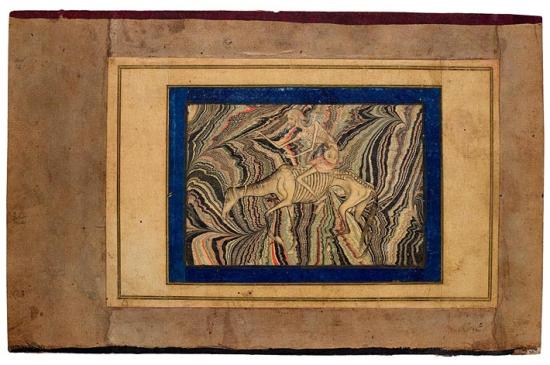Emaciated Horse and Rider

Emaciated Horse and Rider
From the Read Persian Album, first half of the seventeenth century
Purchased by Pierpont Morgan, 1911
Set against a marbled background, a nearly skeletal rider crosses his ankles to stay astride an emaciated horse with no saddle. Other marbled representations of emaciated horses are known, and the motif remained popular in Persian and Mughal painting. For some, the emaciated rider recalls Majnūn, the ill-fated lover of Lailā; while others see connections with European prints of the personification of death on a pale horse. There have also been mystical interpretations. For Rūmī, the starved horse denoted lust (nafs), which faith and reason had to reign in. In India emaciation was associated with ascetics and holy men.
The Read Persian Album
Pierpont Morgan's 1911 purchase of two albums (one Persian, one Mughal) from Sir Charles Hercules Read, Keeper of British and Medieval Antiquities at the British Museum, London, proved to be an important turning point in the history of the Morgan Islamic collection. Belle da Costa Greene, Morgan's librarian, accompanied by art historian and collector Bernard Berenson, first saw paintings from the albums at the great exhibition of Islamic art in Munich the previous year. She wrote to Read that they were among the finest works exhibited there and that this important school should be represented in Morgan's collection, asking him to give Morgan the right of first refusal. The Persian album was begun by Husain Khān Shāmlū, governor of Herat (r. 1598–1618), and possibly continued by his son and successor, Hasān Shāmlū (d. 1646). Fifteen of its twenty-seven sheets, once bound accordion style, are presented here. Many of the paintings were made in Herat itself.